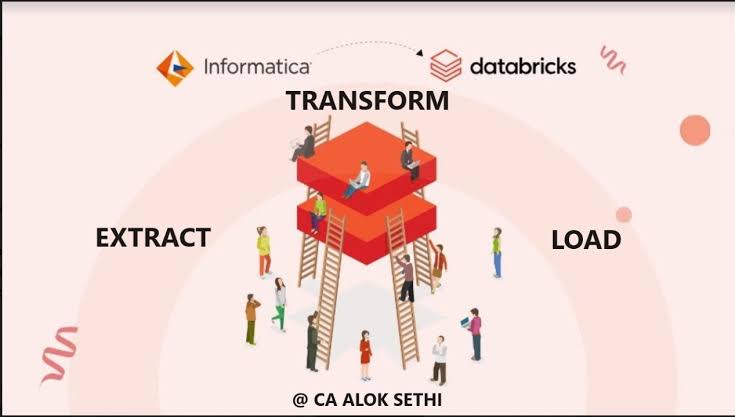As enterprises generate and process vast amounts of data, the need for scalable, cost-efficient, and high-performance data platforms has never been greater. Many organizations rely on Informatica for their ETL (Extract, Transform, Load) processes, but traditional on-premises ETL tools often struggle with modern data demands. Migrating from Informatica to Databricks provides a unified, cloud-native, and AI-powered platform for data engineering, analytics, and machine learning.
This blog explores the key reasons enterprises should migrate Informatica workloads to Databricks and how it unlocks transformative benefits for data-driven decision-making.
Challenges of legacy Informatica workloads
While Informatica has been a trusted ETL tool for years, organizations face multiple challenges with legacy implementations:
- Scalability issues: Traditional Informatica setups often struggle to scale efficiently, especially with growing data volumes and real-time processing demands.
- High maintenance costs: On-premises infrastructure requires significant investment in hardware, software, and ongoing maintenance.
- Slow data processing: Batch-oriented ETL processes can introduce latency, making real-time analytics challenging.
- Siloed data ecosystem: Informatica workloads may be restricted to specific environments, limiting interoperability with modern data lakes and cloud-native analytics.
- Complex upgrades & licensing: Enterprises often face difficulties in upgrading the Informatica environment due to licensing costs and compatibility issues.
Key benefits of Informatica to Databricks migration
Migrating Informatica workloads to Databricks offers several tangible benefits for enterprises. It enhances efficiency, reduces costs, and opens new opportunities for advanced analytics and AI-driven insights.
1. Improved efficiency and agility
Databricks migration significantly accelerates ETL processes through its distributed computing architecture, enabling enterprises to process massive datasets faster. The platform supports real-time analytics, allowing businesses to extract insights without the delays associated with batch processing. Additionally, it reduces operational overhead by automating pipeline management, freeing up IT teams to focus on higher-value tasks.
2. Lower total cost of ownership (TCO)
One of the biggest advantages of Informatica to Databricks migration is the reduction in overall infrastructure costs. Since Databricks is cloud-native, enterprises no longer need to maintain expensive on-premises hardware, which translates to significant savings. The platform also optimizes cloud resource usage, ensuring businesses only pay for what they consume. Furthermore, organizations benefit from lower licensing costs compared to traditional ETL platforms, making the migration financially viable in the long run.
3. Greater flexibility for advanced use cases
Databricks extends beyond ETL, offering seamless integration with machine learning, AI, and predictive analytics tools. This makes it easier for enterprises to build advanced data models and drive innovation. The platform also supports structured and unstructured data within a unified architecture, making it adaptable to diverse data processing needs. Additionally, interactive notebooks facilitate collaborative data science, allowing data teams to work together efficiently across departments.
4. Future-proof data architecture
By adopting modern cloud-native paradigms, enterprises can ensure their data infrastructure remains agile and scalable. Databricks is designed to evolve with emerging technologies, making it easy to integrate new data sources and formats as business needs change. Furthermore, the platform promotes data democratization, enabling self-service analytics for various stakeholders, reducing dependency on specialized IT teams, and fostering a more data-driven culture within organizations.
Challenges in migrating Informatica workloads and how automation can help
While migrating Informatica ETL workloads to Databricks offers significant advantages, enterprises face several migration challenges. However, automation plays a crucial role in overcoming these hurdles and ensuring a smooth transition.
1. Challenge: Complexity of ETL code migration
Migrating Informatica workloads involves translating complex mappings, workflows, and business logic into a cloud-native architecture. Manual code conversion is time-consuming and prone to errors.
Solution: Automated tools like Impetus’ LeapLogic can analyze, convert, and optimize Informatica mappings into PySpark code, ensuring a seamless transition with minimal manual intervention. Impetus’ LeapLogic accelerates migration by intelligently converting ETL logic while maintaining functional integrity.
2. Challenge: Schema and data compatibility issues
Data models in Informatica may not always align with Databricks’ schema structures, leading to inconsistencies and data integrity risks.
Solution: Automation tools perform schema conversion and validation, ensuring data compatibility between the legacy system and Databricks. Automated checks detect discrepancies early and resolve them before deployment.
3. Challenge: Performance optimization in the cloud
Traditional ETL jobs optimized for on-premises execution may not perform efficiently in a cloud-based, distributed environment.
Solution: Automated refactoring tools help optimize data pipelines for Databricks’ distributed architecture. They reconfigure workloads to leverage cloud-native features like auto-scaling and parallel processing for improved performance.
4. Challenge: validation and risk mitigation
Manually testing migrated workloads is labor-intensive and may miss critical errors, causing disruptions in production.
Solution: Automated migration solutions perform comprehensive testing and validation, ensuring that migrated pipelines produce accurate and technology consistent results. Accelerators like Impetus’ LeapLogic provide automated lineage tracking and impact analysis to de-risk the migration process.
5. Challenge: Migration downtime and business disruptions
Enterprises fear operational disruptions during migration, which could impact business continuity.
Solution: With automated migration tools, organizations can follow a phased approach, running Informatica and Databricks workloads in parallel before full cutover. This reduces downtime and ensures a seamless transition.
How Impetus’ LeapLogic accelerates Informatica to Databricks migration
Migrating from Informatica to Databricks can be complex, requiring careful assessment, code translation, and validation. LeapLogic, Impetus’ automated cloud migration solution, simplifies this transition by:
- Automating ETL code conversion: Converts Informatica mappings, workflows, and transformations into optimized PySpark code for Databricks.
- Ensuring schema and data compatibility: Performs schema conversion and validates data consistency post-migration.
- Providing end-to-end modernization: Rebuilds ETL workflows to leverage Databricks-native features and best practices.
- Reducing migration time and risk: Minimizes manual effort and ensures a seamless transition with minimal disruption.
Conclusion
Migrating Informatica workloads to Databricks is a strategic move for enterprises looking to improve performance, reduce costs, and unlock AI-driven insights. By leveraging Databricks’ unified lakehouse architecture, real-time processing, and cloud scalability, organizations can future-proof their data ecosystems.
However, a successful migration requires careful execution. Impetus’ LeapLogic can help enterprises accelerate and de-risk the journey by automating ETL migration, optimizing workloads, and ensuring a seamless transition. Ready to modernize your Informatica



































